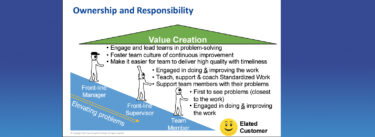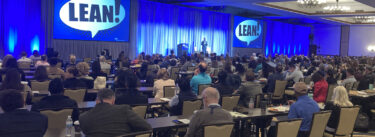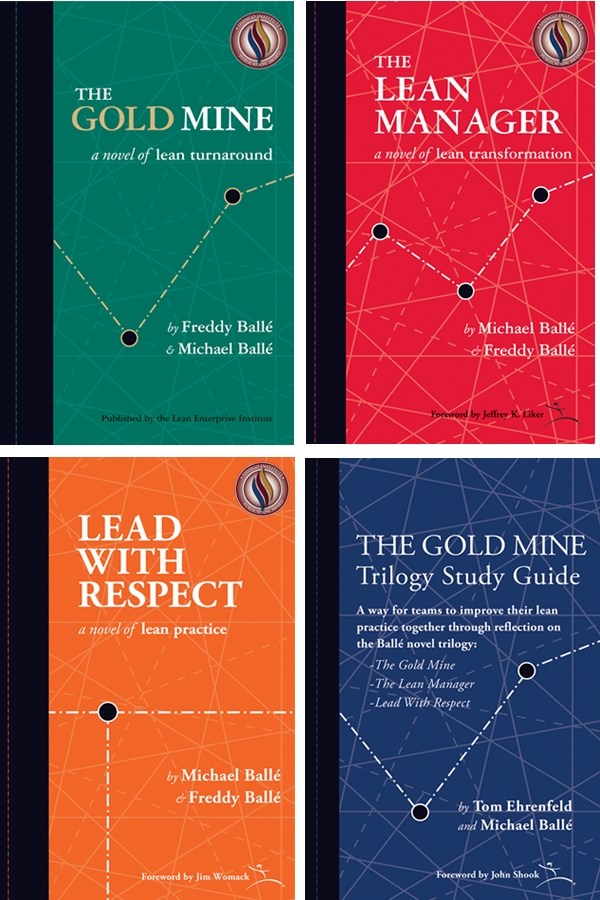Peter Drucker invented modern management, was denounced for it by GM, and later recanted.
Management By Objectives is the hands-on reflection of Frederick Taylor’s breakthrough ideas. As Taylor himself stated: “In the past the man has been first; in the future the system must be first.” Of course, Taylor’s ideas where neither simple nor simplistic – he sought to accelerate training by having engineers write detailed instructions for every job and make workers apply them. In doing so, he succeed beyond his wildest expectations and ushered a new form of corporate juggernauts that would probably surprise him were he still around to see it.
Modern corporations are built upon the idea that efficiency must be enforced through staff systems. Finance enforces cost accountability because operational people will spend like there is no tomorrow. IT enforces complexity management because things have gone so far out of hand no human could possibly deal with such complex systems. Human Resources are fast become a labor cost control function. Each functional director must convince the CEO that applying their preferred program, initiative, or system will force line managers in getting the results every one asks from them.
Line managers, on the other hand, have to get the job done and have to fight the fires due to the fact that no one ever understands fickle customer preferences or the technology to deliver products and services well enough. They have to comply with the endless demands from various corporate programs to make sure they… perform. If you can’t reach your objective and/or are behind on your action plans, no worries! Corporate will create a specific group to manage objectives and action plans better. Meanwhile, some poor guy somewhere has to get on with actually doing the job.
Drucker saw this earlier than most. He saw that our society was becoming a knowledge society where advantage lay not in information, which would become a commodity, but in the actual knowledge and wisdom to know what to do with this information. He also realized that you can’t force any one to learn. Learning is a deeply human process involving curiosity, motivation, exploration, and the space to think and experiment. It requires great teachers. It cannot be reduced programmatic solutions, either. It needs air to breathe.
Corporate functions were invented on the Taylorist notion that engineers devise the best system which is then taught to assembly line workers. As far as it goes, it makes sense, but what applied to immigrant manual labor in the late nineteenth century hardly applies to our reality now.
Lean shows there is a different way. By challenging and supporting line management (sales, engineering, production, procurement) to solve their own problems and learn first hand, it offers a method to solve the problem framed by Drucker. A lean system is, just as Taylor intended, a learning system, but the learning theory is radically different. It’s based on developing every person’s kaizen mind, not asking them to thoughtlessly apply a best practice that was invented far from their real world. It’s about genchi genbutsu, kaizen, and respect.
Why does all of this background matter? Lean programs can easily become one more Taylorist weigh around operational managers’ necks. Lean programs with prescribed solutions to obtain specified results are nothing better than another corporate system intended to squeeze line managers into delivering results. Compliance matters more than competence. Unfortunately, every company’s processes are perfectly adapted to their current level of performance. Superior competence delivers superior results, not compliance.
As a lean adept, which side are you on? Are you supporting line managers in learning from facing their own challenges and solving their own problems? Or are you pushing their heads under water by adding kaizen blitzes, 5S, VSMs, roadmaps, and maturity audits to their already overburdened work day? Are you looking at business results as a reflection of the quality of your help? Or are you whispering in the CEO’s ear that if only they had complied more willingly to your instructions, results would be forthcoming?
As Drucker saw, “knowledge has to be improved, challenged and increased constantly, or it vanishes.” The goal of continuous improvement is… continuous improvement. Are you in?






